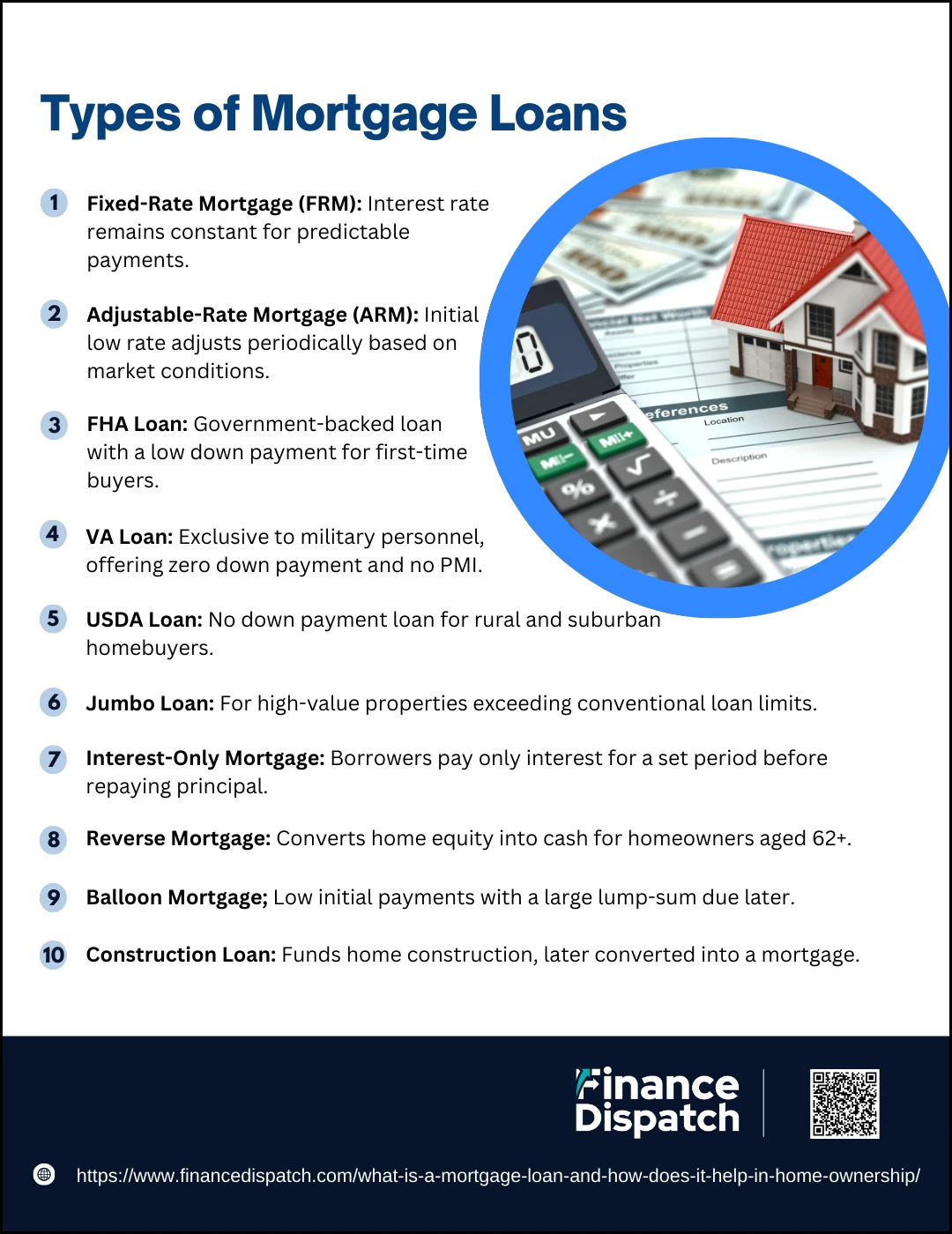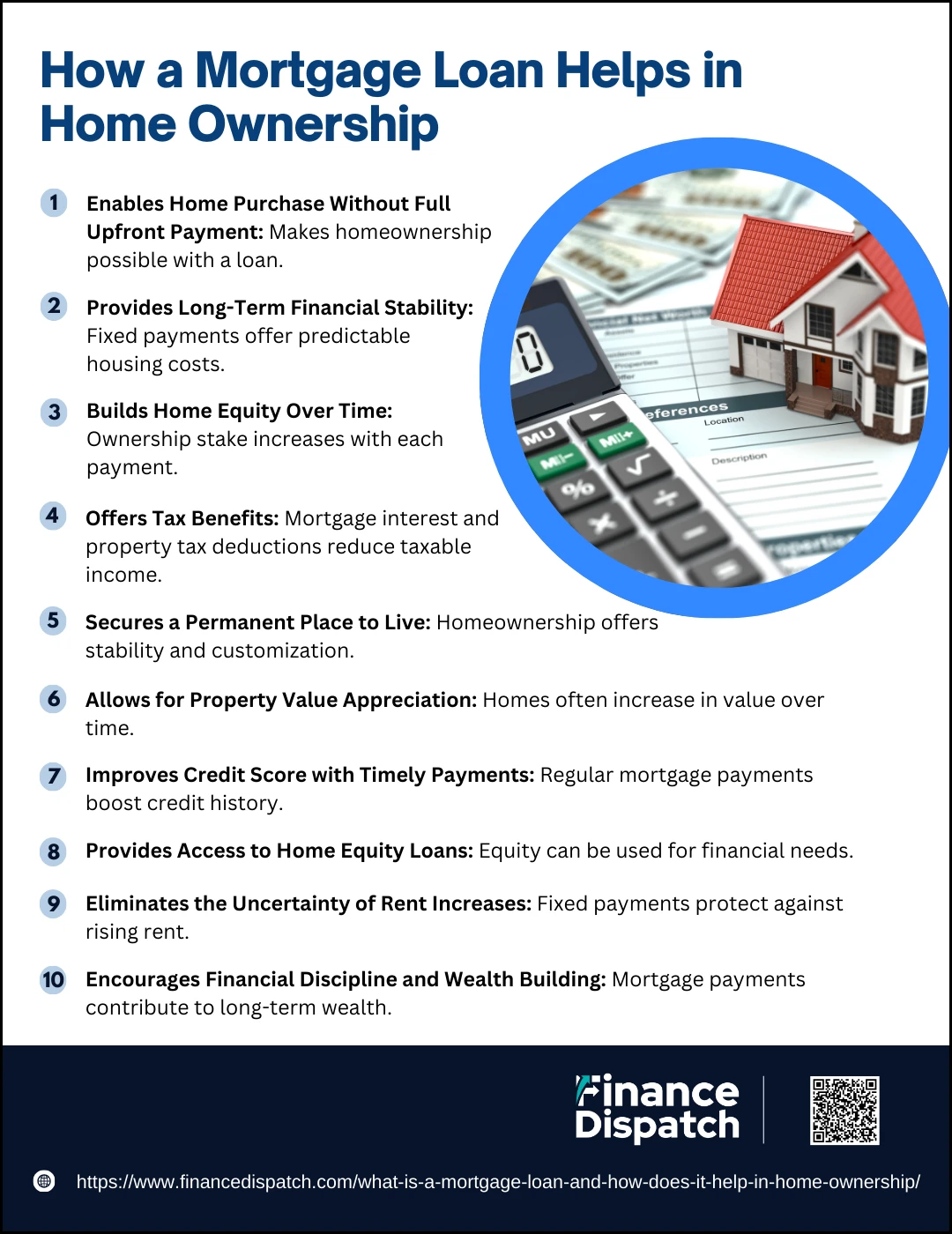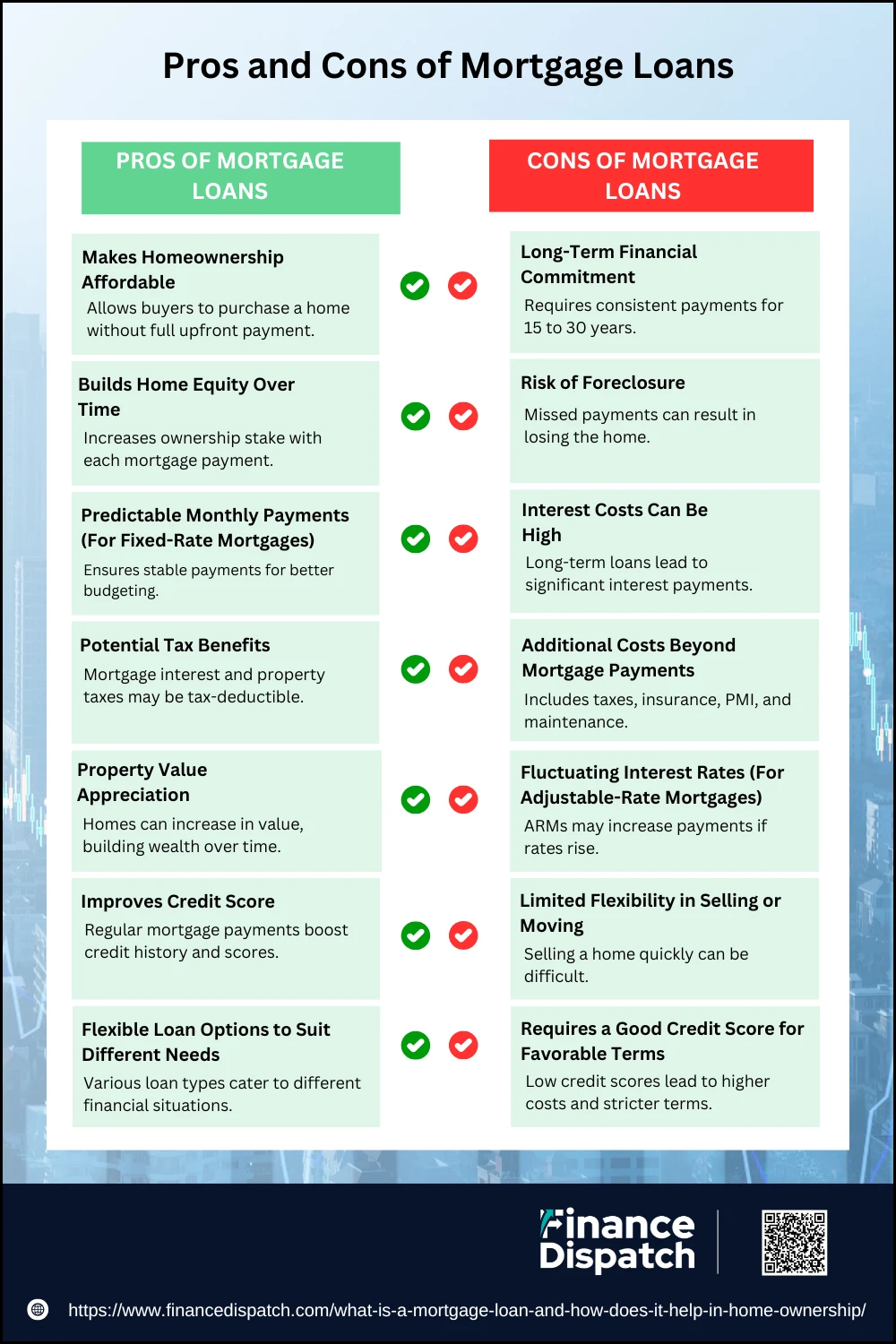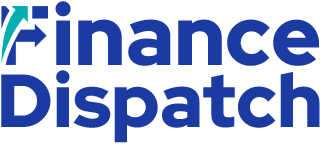Buying a home is one of the biggest financial decisions in life, and for most people, it wouldn’t be possible without a mortgage loan. A mortgage loan is a type of financing that allows individuals to purchase a home by borrowing money from a lender and repaying it over time, typically in monthly installments. Instead of paying the full price of a property upfront, a mortgage makes homeownership more accessible by spreading out payments over several years. This not only helps individuals achieve their dream of owning a home but also allows them to build equity over time. Understanding how mortgage loans work, the different types available, and their role in homeownership is essential for making informed financial decisions.
What is Mortgage Loans?
A mortgage loan is a type of secured loan that allows individuals to purchase or refinance a home by borrowing money from a lender. The loan is repaid over an agreed period through fixed monthly payments that include both principal and interest. Unlike unsecured loans, a mortgage requires the borrower to pledge the property as collateral, meaning the lender has a legal claim to the home until the loan is fully repaid. If the borrower fails to make payments, the lender can foreclose on the property and sell it to recover the outstanding debt. Mortgage loans come in various forms, including fixed-rate, adjustable-rate, FHA, VA, and jumbo loans, each catering to different financial needs. By making homeownership more affordable, mortgage loans provide individuals with a pathway to owning property without having to pay the full cost upfront.
 How Does a Mortgage Loan Work?
How Does a Mortgage Loan Work?
A mortgage loan is a long-term financial commitment that enables individuals to buy a home by borrowing money from a lender. Since purchasing a house outright can be expensive, a mortgage allows buyers to spread the cost over several years, making homeownership more attainable. The borrower repays the loan through fixed monthly payments that cover both principal (the amount borrowed) and interest (the cost of borrowing). The property itself serves as collateral, meaning the lender has the right to claim it if the borrower fails to meet the repayment terms. To secure a mortgage, borrowers must go through a structured process, which includes credit evaluation, loan approval, and property appraisal. Below is a step-by-step breakdown of how a mortgage loan works.
Steps in the Mortgage Loan Process
1. Pre-Approval
Before searching for a home, borrowers seek pre-approval from a lender. The lender assesses their financial status, including credit score, income, and debt-to-income ratio, to determine the loan amount they qualify for. This helps buyers set a realistic budget.
2. House Hunting
With a pre-approval in hand, borrowers can confidently search for homes within their price range. A pre-approved mortgage makes buyers more attractive to sellers, as it shows they are financially capable of purchasing the property.
3. Mortgage Application
Once a suitable home is chosen, the borrower formally applies for a mortgage. They submit required financial documents such as tax returns, bank statements, proof of employment, and credit reports.
4. Loan Underwriting
The lender evaluates the borrower’s application, checking their creditworthiness and ability to repay the loan. An appraisal of the property is conducted to confirm that its value justifies the loan amount. This step ensures the lender is not financing a home that is overpriced.
5. Loan Approval and Terms Agreement
If the underwriter approves the loan, the lender provides the borrower with a loan estimate, detailing the interest rate, repayment schedule, closing costs, and monthly payment breakdown. The borrower must review and agree to the terms before moving forward.
6. Closing Process
At the closing, both the buyer and seller sign the necessary legal documents to complete the property transfer. The borrower pays the required down payment and closing costs, and the lender disburses the loan funds to the seller.
7. Monthly Mortgage Payments Begin
After closing, the borrower starts making regular mortgage payments, which typically include:
- Principal: The portion of the payment that reduces the loan balance.
- Interest: The cost of borrowing money from the lender.
- Property Taxes: Collected by the lender and paid to the government.
- Homeowners Insurance: Protects against damages or liabilities.
- Private Mortgage Insurance (PMI) (if applicable): Required if the down payment is less than 20%.
8. Building Equity Over Time
With each mortgage payment, a portion goes toward reducing the loan balance, increasing the borrower’s home equity (the amount of the home they truly own). Over time, as equity builds, homeowners may use it for refinancing, home improvements, or securing a home equity loan.
9. Loan Completion or Refinancing
Once the borrower makes all the required payments, they own the home outright. Alternatively, they may choose to refinance the mortgage to take advantage of lower interest rates, shorten the loan term, or adjust monthly payments.
 Types of Mortgage Loans
Types of Mortgage Loans
When it comes to financing a home, there are several types of mortgage loans designed to suit different financial situations and homeownership goals. Choosing the right mortgage depends on factors such as income, credit score, down payment, and long-term financial plans. Some loans offer fixed interest rates for stability, while others provide adjustable rates for short-term savings. Government-backed loans cater to borrowers with lower credit scores or limited savings, while conventional loans suit those with strong financial credentials. Below are the most common types of mortgage loans available to homebuyers.
1. Fixed-Rate Mortgage (FRM)
A fixed-rate mortgage keeps the interest rate constant throughout the loan term, ensuring predictable monthly payments. This type of loan is ideal for borrowers who plan to stay in their homes long-term and prefer financial stability.
2. Adjustable-Rate Mortgage (ARM)
Unlike a fixed-rate mortgage, an ARM starts with a lower introductory interest rate, which adjusts periodically based on market conditions. This is a good option for borrowers who expect to sell or refinance before the rate increases.
3. Federal Housing Administration (FHA) Loan
FHA loans are government-backed mortgages designed for first-time homebuyers and those with lower credit scores. They require a smaller down payment (as low as 3.5%) and have more flexible qualification criteria.
4. Veterans Affairs (VA) Loan
VA loans are exclusive to military service members, veterans, and eligible spouses. They offer zero down payment, no private mortgage insurance (PMI), and competitive interest rates, making homeownership more accessible for those who have served in the military.
5. United States Department of Agriculture (USDA) Loan
USDA loans are designed for rural and suburban homebuyers with moderate to low incomes. These loans require no down payment and offer low interest rates, making them an affordable option for qualifying borrowers.
6. Jumbo Loan
Jumbo loans exceed the conventional loan limits set by Fannie Mae and Freddie Mac and are used for purchasing high-value properties. Since these loans pose a higher risk to lenders, they require strong credit scores and larger down payments.
7. Interest-Only Mortgage
With this type of mortgage, borrowers pay only the interest for a specific period (usually 5–10 years) before beginning to repay the principal. This can lower initial payments but may lead to higher costs in the long run.
8. Reverse Mortgage
Designed for homeowners aged 62 or older, a reverse mortgage allows them to convert home equity into cash. Instead of making monthly payments, the loan is repaid when the homeowner sells the house, moves, or passes away.
9. Balloon Mortgage
A balloon mortgage has low monthly payments for a set period, followed by a large lump-sum payment at the end. This option is risky but can be beneficial for those expecting to refinance or sell before the balloon payment is due.
10. Construction Loan
A construction loan provides funds to build a new home rather than purchasing an existing one. Once the construction is complete, borrowers may either pay off the loan or convert it into a traditional mortgage.
 How a Mortgage Loan Helps in Home Ownership
How a Mortgage Loan Helps in Home Ownership
For many individuals and families, buying a home is a significant milestone, but the high cost of real estate often makes it impossible to pay in full upfront. This is where a mortgage loan becomes essential. A mortgage provides financial leverage, allowing buyers to spread the cost of homeownership over several years with manageable monthly payments. Instead of waiting decades to save enough money to buy a house outright, a mortgage enables homeownership sooner, while also offering benefits such as home equity growth, financial stability, and long-term wealth accumulation. Additionally, it protects borrowers from rising rental costs and offers potential tax benefits. Below are the key ways a mortgage loan facilitates homeownership.
1. Enables Home Purchase Without Full Upfront Payment
Real estate prices are often beyond the immediate financial reach of most buyers. A mortgage allows individuals to buy a home by paying a small down payment upfront and covering the rest through a loan, making homeownership achievable.
2. Provides Long-Term Financial Stability
Fixed-rate mortgage loans ensure predictable monthly payments, unlike rent, which can increase annually. This stability helps homeowners plan their finances better and avoid unexpected housing cost fluctuations.
3. Builds Home Equity Over Time
With each mortgage payment, a portion goes toward reducing the loan principal, increasing the owner’s equity (ownership stake) in the home. Over time, this equity can serve as a financial asset.
4. Offers Tax Benefits
Homeowners can claim tax deductions on mortgage interest and property taxes, potentially lowering their taxable income and making homeownership financially advantageous.
5. Secures a Permanent Place to Live
Unlike renting, where tenants are subject to lease agreements, rent hikes, or evictions, homeownership offers stability and the ability to customize the living space without restrictions.
6. Allows for Property Value Appreciation
Homes generally increase in value over time. This means homeowners may sell their property at a higher price than they originally paid, generating a profit and increasing overall wealth.
7. Improves Credit Score with Timely Payments
A mortgage loan contributes to a borrower’s credit history. Making regular and timely payments boosts credit scores, making it easier to qualify for other financial opportunities like personal loans or refinancing.
8. Provides Access to Home Equity Loans
As homeowners build equity, they can borrow against their home’s value through home equity loans or home equity lines of credit (HELOCs) to fund renovations, education, or other major expenses.
9. Eliminates the Uncertainty of Rent Increases
Unlike renters who must deal with fluctuating rental prices due to inflation and landlord decisions, mortgage payments remain stable, particularly with a fixed-rate loan, allowing for long-term financial planning.
10. Encourages Financial Discipline and Wealth Building
Taking on a mortgage requires careful budgeting and financial responsibility. Over time, owning a home can lead to wealth accumulation, as monthly payments increase the owner’s stake in the property rather than going to a landlord.
Steps in the Mortgage Process
Securing a mortgage is a structured process that involves multiple steps, from pre-approval to closing. Understanding each phase can help borrowers navigate the process efficiently and avoid potential pitfalls. The mortgage process typically begins with assessing the borrower’s financial status, selecting a loan type, and submitting an application. After approval, the lender verifies all details, conducts a property appraisal, and finalizes the loan terms before closing. Below is a detailed breakdown of the mortgage process.
Mortgage Process Overview
| Step | Description |
| 1. Pre-Approval | The borrower submits financial details to a lender, who reviews credit score, income, and debt-to-income ratio to determine loan eligibility. |
| 2. House Hunting | With pre-approval in hand, the borrower searches for a property within their budget, often with the help of a real estate agent. |
| 3. Mortgage Application | The borrower formally applies for a mortgage, providing financial documents such as tax returns, bank statements, and employment verification. |
| 4. Loan Underwriting | The lender evaluates the borrower’s financial history, verifies documents, and orders a property appraisal to assess its market value. |
| 5. Loan Approval | If all criteria are met, the lender issues a loan commitment letter, confirming the mortgage terms, interest rate, and conditions. |
| 6. Closing Disclosure | The borrower receives a closing disclosure outlining final loan costs, monthly payments, and any fees due at closing. |
| 7. Loan Closing | The borrower signs the mortgage agreement, pays closing costs, and receives the keys to their new home. The lender disburses the funds to the seller. |
| 8. Monthly Payments Begin | The borrower starts making monthly mortgage payments, which include principal, interest, property taxes, and homeowners insurance. |
 Pros and Cons of Mortgage Loans
Pros and Cons of Mortgage Loans
A mortgage loan is a powerful financial tool that enables homeownership by allowing buyers to spread the cost of a home over several years instead of paying the full amount upfront. It provides individuals with an opportunity to invest in real estate while managing their finances efficiently. However, like any financial commitment, a mortgage comes with both benefits and risks. While it allows borrowers to build equity and take advantage of potential property appreciation, it also involves long-term obligations, interest costs, and the risk of foreclosure if payments are not maintained. Below is a detailed breakdown of the pros and cons of mortgage loans to help borrowers make an informed decision.
Pros of Mortgage Loans
1. Makes Homeownership Affordable
Mortgages eliminate the need for buyers to have large sums of cash upfront, making it easier to own a home. With flexible loan terms, homebuyers can choose repayment periods that suit their financial situation.
2. Builds Home Equity Over Time
Every mortgage payment reduces the loan balance, gradually increasing the homeowner’s equity. Home equity can be used later for refinancing, home improvement, or even as collateral for other loans.
3. Predictable Monthly Payments (For Fixed-Rate Mortgages)
Fixed-rate mortgages offer stable and predictable payments, helping homeowners manage their budgets effectively. Unlike renting, where landlords may increase rent, mortgage payments remain the same throughout the loan term (except for property taxes and insurance adjustments).
4. Potential Tax Benefits
Homeowners can deduct mortgage interest and property taxes on their tax returns, lowering their taxable income. First-time buyers may also qualify for additional tax benefits, depending on government programs.
5. Property Value Appreciation
Real estate values tend to increase over time, meaning homeowners can build wealth as their property gains value. Selling the home at a higher price in the future can generate substantial profit.
6. Improves Credit Score
Making consistent, on-time mortgage payments positively impacts the borrower’s credit score. A higher credit score improves eligibility for better interest rates on future loans, credit cards, or refinancing options.
7. Flexible Loan Options to Suit Different Needs
Borrowers can choose from a variety of mortgage options, such as:
- Fixed-rate mortgages for stability.
- Adjustable-rate mortgages (ARMs) for lower initial payments.
- Government-backed loans (FHA, VA, USDA) for borrowers with lower credit scores or limited down payments.
8. Access to Home Equity Loans
Homeowners can tap into their home equity through a home equity loan or line of credit (HELOC) for major expenses such as home improvements, education, or medical bills.
Cons of Mortgage Loans
1. Long-Term Financial Commitment
Mortgage loans typically last 15 to 30 years, requiring consistent payments for decades. Borrowers must plan their finances carefully to ensure they can sustain long-term repayment.
2. Risk of Foreclosure
If a borrower fails to make payments, the lender can seize and sell the home through foreclosure. Losing a home due to foreclosure can severely impact a borrower’s financial stability and credit score.
3. Interest Costs Can Be High
Over a 30-year loan period, homeowners may end up paying more in interest than the original home price. Higher interest rates can significantly increase the total cost of homeownership.
4. Additional Costs Beyond Mortgage Payments
Homeownership comes with added costs such as:
- Property taxes (which may increase over time).
- Homeowners insurance (required by lenders).
- Private Mortgage Insurance (PMI) for borrowers with less than 20% down payment.
- Closing costs and maintenance expenses.
5. Fluctuating Interest Rates (For Adjustable-Rate Mortgages)
Borrowers with adjustable-rate mortgages (ARMs) may experience increasing monthly payments if interest rates rise. Unpredictable rate hikes can strain financial stability.
6. Limited Flexibility in Selling or Moving
Unlike renting, where tenants can move freely after their lease ends, homeowners with a mortgage may find it difficult to sell quickly. If the housing market declines, selling the home at a loss or breaking even can be challenging.
7. Requires a Good Credit Score for Favorable Terms
Borrowers with low credit scores may face:
- Higher interest rates.
- Stricter loan approval requirements.
- Larger down payment demands.
8. Market Risks and Depreciation
In a declining housing market, a home may lose value, leading to a situation where the mortgage balance is higher than the home’s worth (negative equity). This makes refinancing or selling at a profit difficult.
Steps to Apply for a Mortgage Loan
Applying for a mortgage loan is a structured process that requires careful preparation and financial planning. Whether you’re a first-time homebuyer or looking to refinance, understanding the steps involved can help streamline the application process and improve your chances of approval. Lenders evaluate factors such as credit history, income, debt, and property value to determine loan eligibility. By following these steps, you can secure a mortgage loan efficiently and avoid potential roadblocks.
Steps to Apply for a Mortgage Loan
- Check Your Credit Score and Financial Health – Review your credit score, income, and debt-to-income ratio (DTI) to ensure you meet lender requirements. A higher credit score increases your chances of securing a favorable interest rate.
- Determine Your Budget – Assess your financial situation to decide how much home you can afford. Use a mortgage calculator to estimate your monthly payments based on loan amount, interest rate, and term length.
- Save for a Down Payment – Depending on the type of loan, you may need a down payment ranging from 3% to 20% of the home’s purchase price. A higher down payment reduces loan costs and may eliminate private mortgage insurance (PMI).
- Get Pre-Approved by a Lender – A pre-approval letter from a lender confirms how much you qualify for, strengthening your position when making an offer on a home.
- Gather Required Documents – Lenders require financial documents such as tax returns, pay stubs, W-2 forms, bank statements, and debt information to assess your financial stability.
- Compare Mortgage Loan Options – Research different types of mortgage loans (e.g., fixed-rate, adjustable-rate, FHA, VA, or USDA loans) and compare interest rates, loan terms, and lender fees.
- Submit a Mortgage Loan Application – Once you’ve chosen a lender, fill out a formal mortgage application and submit all required documents.
- Loan Underwriting and Property Appraisal – The lender verifies financial details and orders an appraisal to ensure the property’s value matches the loan amount.
- Loan Approval and Closing Disclosure – If approved, the lender provides a closing disclosure, outlining the final loan terms, interest rates, fees, and payment schedule.
- Close the Loan and Sign Documents – At the closing meeting, you’ll sign the mortgage agreement, pay closing costs, and receive the keys to your new home.
Tips for Choosing the Right Mortgage
Selecting the right mortgage is a crucial step in the home-buying process. With various loan types, interest rates, and lender requirements, making an informed decision can save you money and prevent financial strain in the future. The best mortgage option depends on factors such as your income, credit score, loan term, and long-term financial goals. By carefully evaluating your options and understanding loan terms, you can secure a mortgage that best fits your needs. Below are essential tips to help you choose the right mortgage.
Tips for Choosing the Right Mortgage
- Assess Your Financial Situation – Review your credit score, income, and debt-to-income ratio (DTI) to determine how much you can afford. A strong financial profile can help you qualify for better loan terms.
- Compare Loan Types – Research different mortgage options, such as fixed-rate mortgages (FRM), adjustable-rate mortgages (ARM), FHA loans, VA loans, and USDA loans, to find one that suits your financial needs.
- Consider the Loan Term – Decide whether a 15-year, 20-year, or 30-year loan term is best for you. Shorter terms have higher monthly payments but save money on interest, while longer terms offer lower payments with higher interest costs.
- Understand Interest Rates – Compare fixed and adjustable interest rates. A fixed rate provides stability, while an adjustable rate may offer initial savings but can increase over time.
- Check Lender Fees and Closing Costs – Review the origination fees, appraisal fees, and other closing costs to avoid unexpected expenses. Some lenders offer lower fees, which can reduce your overall loan cost.
- Get Pre-Approved for a Mortgage – A pre-approval letter strengthens your position when making an offer on a home and gives you a clear idea of your borrowing limit.
- Determine Your Down Payment Amount – Consider how much you can afford for a down payment. A larger down payment can reduce monthly payments and eliminate private mortgage insurance (PMI).
- Evaluate Mortgage Lenders – Compare lenders based on customer reviews, interest rates, loan terms, and customer service. Choosing a reputable lender can make the mortgage process smoother.
- Look for First-Time Homebuyer Programs – If you’re a first-time buyer, explore government-backed programs or lender incentives that offer lower interest rates, reduced down payments, or closing cost assistance.
- Plan for Additional Homeownership Costs – Besides mortgage payments, factor in property taxes, homeowners insurance, maintenance, and utility costs to ensure affordability.
Common Mistakes to Avoid When Applying for a Mortgage Loan
Applying for a mortgage loan is a major financial step, and even small mistakes can lead to higher costs, loan denial, or unfavorable terms. Many homebuyers, especially first-time applicants, make errors that affect their approval process or increase their loan expenses. To improve your chances of securing the best mortgage, it’s essential to be aware of common pitfalls and avoid them. Below are key mistakes to watch out for when applying for a mortgage loan.
Common Mistakes to Avoid
- Not Checking Your Credit Score – A low credit score can lead to higher interest rates or loan rejection. Always review and improve your credit score before applying.
- Skipping Mortgage Pre-Approval – Without a pre-approval, you may not know your loan eligibility, leading to unrealistic home searches or financing issues.
- Overlooking Additional Costs – Many buyers focus only on the monthly mortgage payment but forget about closing costs, property taxes, insurance, and maintenance.
- Choosing the Wrong Loan Type – Not all loans fit every borrower. Research fixed-rate, adjustable-rate, FHA, VA, and other mortgage options to find the best one for your needs.
- Making Major Financial Changes Before Closing – Avoid changing jobs, making large purchases, or opening new credit accounts, as they can impact your loan approval.
- Not Comparing Lenders – Interest rates, loan terms, and fees vary by lender. Shopping around can save thousands over the life of the loan.
- Failing to Save Enough for a Down Payment – A small down payment may lead to higher monthly costs and require private mortgage insurance (PMI).
- Ignoring Debt-to-Income Ratio (DTI) – High existing debt can reduce your mortgage approval chances. Lower your debt before applying.
- Skipping a Home Inspection – A proper inspection helps identify potential problems before purchase, preventing costly repairs later.
- Not Understanding Loan Terms – Many borrowers sign mortgage agreements without fully understanding interest rates, loan terms, penalties, and fees. Always read and clarify terms before finalizing the loan.
Conclusion
Applying for a mortgage loan is a significant financial decision that requires careful planning and informed choices. Avoiding common mistakes such as neglecting your credit score, underestimating additional costs, or choosing the wrong loan type can save you money and prevent unnecessary stress. By understanding the mortgage process, comparing lenders, and preparing your finances in advance, you can secure a loan with favorable terms that aligns with your long-term homeownership goals. Taking the time to educate yourself and work with trusted professionals will help you navigate the mortgage journey smoothly, ensuring a successful and financially sound home purchase.



